3.1 What Is A Mineral?
Minerals
You have probably heard the term “mineral” commonly used before to describe ingredients in food, beverages, or beauty products. In geosciences, a mineral is something very different. Geologists define a mineral as an inorganic crystalline solid substance with a definite chemical composition that forms through natural processes.
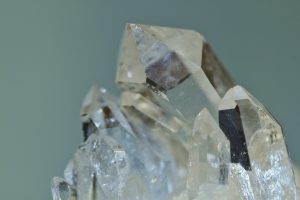
This sounds like a pretty narrow definition, but this precise wording helps scientists decide what materials are – and are not – minerals. Let’s take a closer look at each of the requirements that a material must meet in order to be considered a mineral!
Crystalline Solid
In order for a substance to be considered a mineral, it first must be solid. For example, liquid water is not considered a mineral; but if that water is frozen into ice, then the ice is definitely a mineral. Why do we make this distinction? After all, aren’t ice and water made of the exact same thing: H2O?
A key identifier in mineralogy is the crystal structure of a solid mineral. Let’s do a quick review of some chemistry! All matter or “stuff” in our universe can take on just one of four forms: solid, liquid, gas, or plasma. When matter does settle into one of these forms, the atoms that compose it will act differently. In a gaseous form, the atoms wildly move around with a lot of space between them. In liquid form, the atoms are closer together, but they still move or flow past one another. In solid form, the atoms are densely packed together or nearly “frozen” in place so that they do not move.
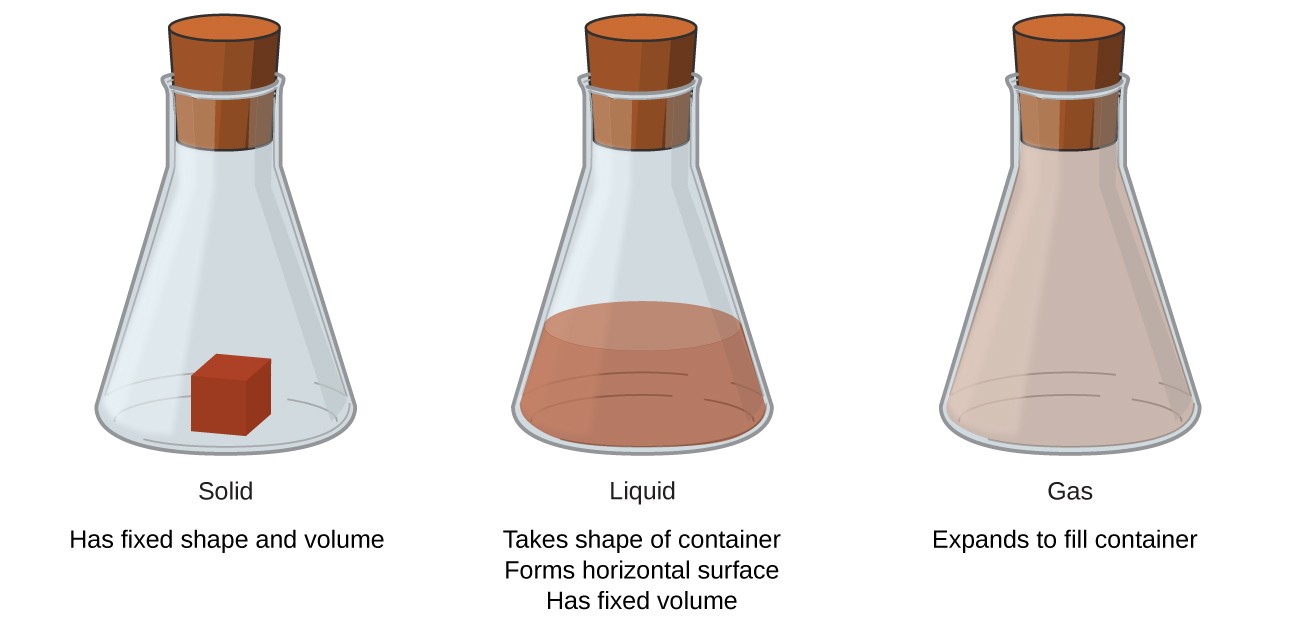
A crystal is a solid in which the atoms are arranged into a repeating pattern that can be predicted. This definition means that if you had two samples of ice, one from Antarctica, and one from your freezer, they should have the exact same configuration of atoms! Knowing this property allows scientists to identify unknown crystals with instruments called X-ray Diffractometers that can view their atomic structure.
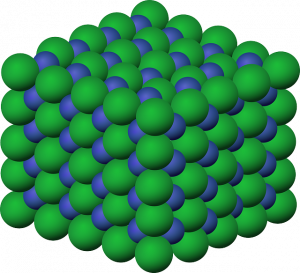
How It Works: X-ray Diffraction How can scientists map the location of atoms in a crystal structure? Believe it or not, this has been a widely available technique long before the development of powerful (and expensive) microscopes that can view objects down at the atomic level. In the early 1900s, scientists discovered that they can determine the distance of bonds between atoms in a crystal by passing X-rays through it. This is done by aiming the X-rays at many different angles throughout the crystals and observing how the crystal structure interferes with – or “diffracts” – the beams.
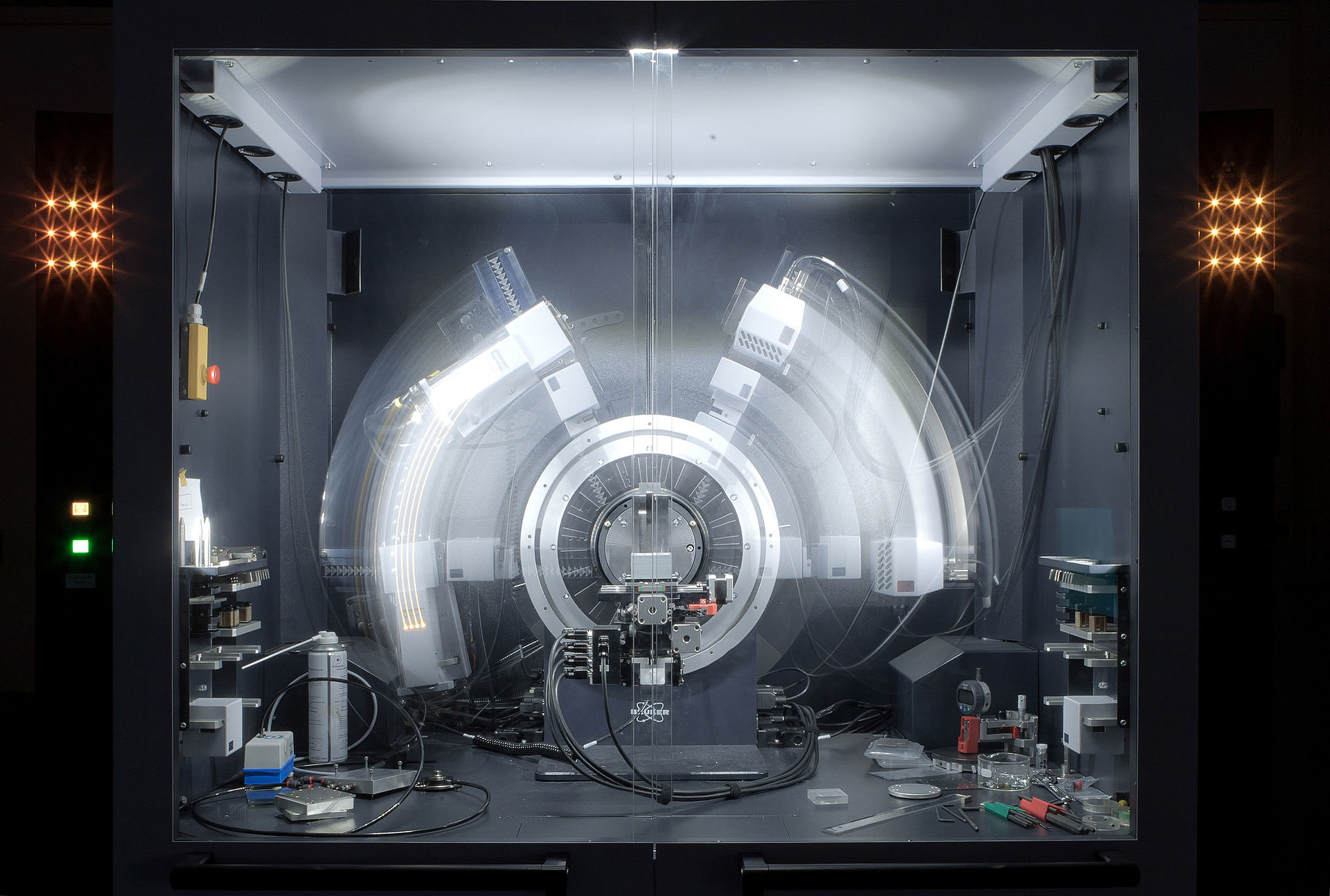
In the world of mineralogy, predictability is key, which is why solid crystals like ice are called “minerals”. There are still a lot of solid materials out there that do not meet the definition of crystal. A good example is glass. Most glass is made of silica, which has the formula SiO2. However, most glass is also an amorphous solid meaning that it has no predictably ordered arrangement of the silicon and oxygen atoms.
Definite Chemical Composition
All minerals have a definite chemical composition. To understand chemical composition, we first need to understand elements and bonds. A chemical element is a pure substance that is not composed of any other ingredients than that represented in the Periodic Table of Elements. One atom can make up a chemical element and bond with another chemical element. When two atoms of different elements combine, or bond, they form a compound. A molecule is a version of a compound that could have the same or different elements.
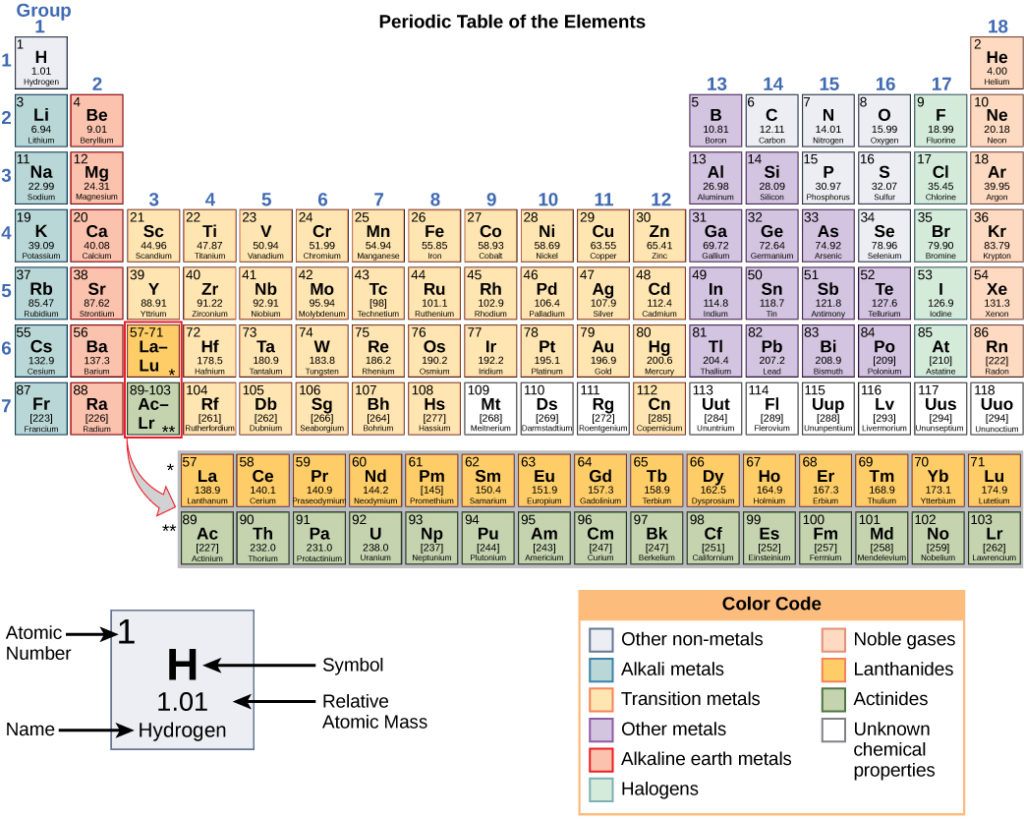
A “definite” chemical composition means that every time we encounter the substance, we will know what type of elements compose it. For example, if you were lucky enough to find a nugget of gold, you would know that it contains only gold (Au) atoms. The mineral diamond is made of only carbon (C) atoms. Most minerals are made up of compounds rather than single elements, but each mineral is still assigned a chemical formula so that we may know what is in it. Halite (rock salt) has the formula NaCl (sodium chloride). Quartz is made of silica, which is represented by the formula SiO2. Sometimes the elements within a chemical formula give a mineral unique properties such as toxicity or radioactivity. For instance, the mineral uraninite is radioactive because it contains uranium in its chemical formula, UO2.
A good way to tell that a substance is NOT a mineral is the absence of a clear chemical formula. This is often true for rocks; most rocks are made of multiple minerals and their composition varies. As a consequence, the overall chemical composition of a rock like basalt, sandstone, or schist is never predictable.
Inorganic vs. Organic Substances
Organic substances are compounds made of carbon and hydrogen bonds that include proteins, carbohydrates, and oils. Inorganic substances, by contrast, have a structure that is not characteristic of living tissues. Let’s consider coal as an example. Coal is a sedimentary rock that generally consists of the element carbon (C). Does that make coal a mineral?
No. Coal is not considered a mineral because it forms when plants and animals decay and their organic matter is compacted together over millions of years. Because coal consists of organic substances, it cannot be a mineral, even if it is also a solid. But what about calcite? Some organisms such corals, coccolithophores, bivalves, and brachiopods will build their shells out of calcium carbonate (CaCO3), which is the formula for the mineral calcite. In fact, the ancient trilobites precipitates eyes made out of this mineral. Does that mean that calcite, like coal, is not a mineral?
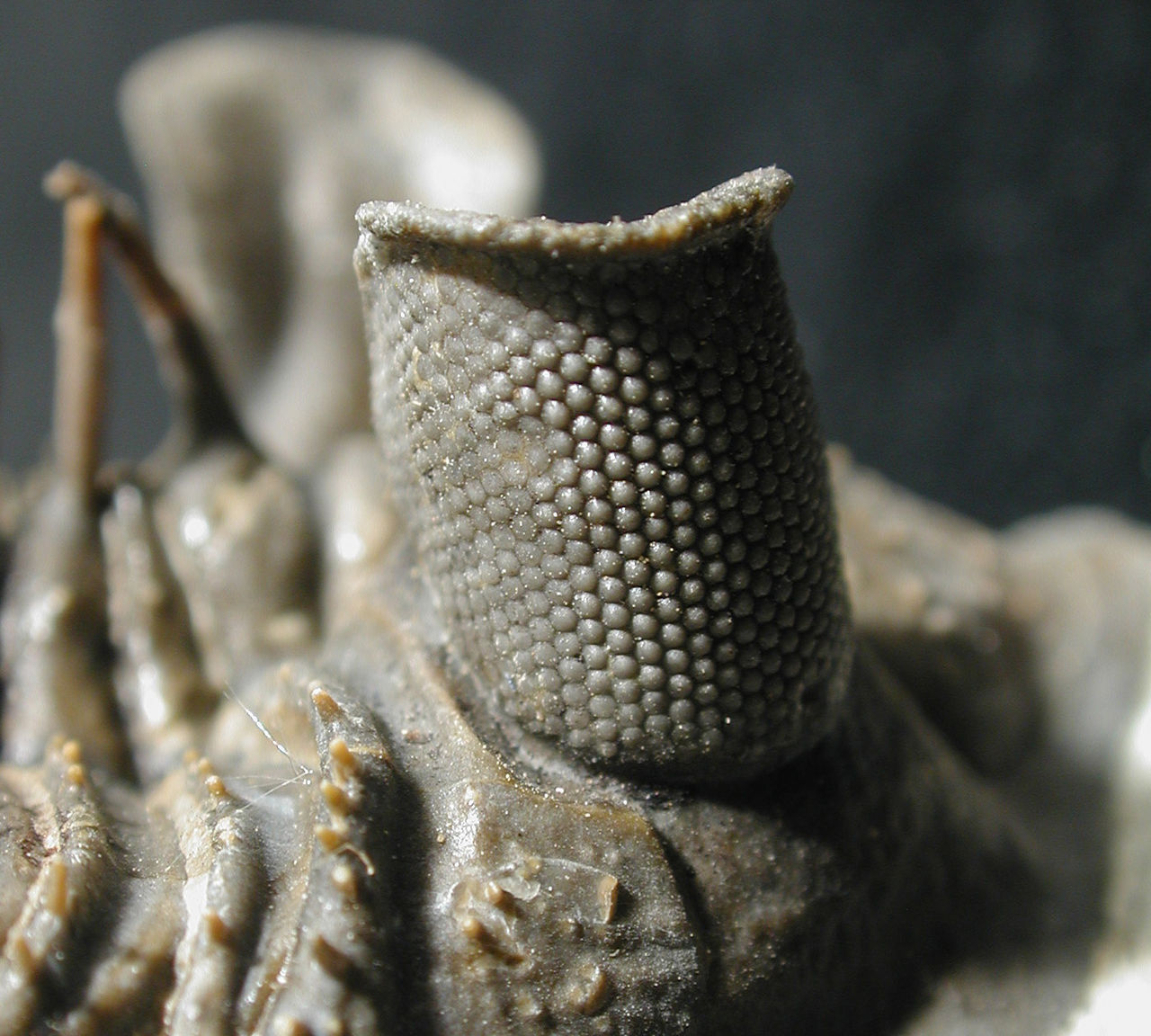
Not exactly! Think about how we define organic substances above–they are things that are built with carbon and hydrogen bonds to develop living tissues. The formula for calcite is CaCO3. Furthermore, not all calcite crystals make up living materials – in fact, most calcite is NOT precipitated by life! A mineral CAN be produced by natural processes such as a biological precipitation; however, we cannot have minerals made of proteins or sugars.
Natural Processes
Minerals are only made by natural processes that can occur in our Universe. This criteria has been made more important due to the recent innovation of synthetic minerals. In the last several decades, scientists have made breakthroughs in mimicking the extraordinary pressures and temperatures required in nature to produce expensive gemstones such as diamonds. It is now possible to take any source of carbon, such as peanut butter or even a favorite pet’s ashes, and subject them to mantle conditions in a laboratory setting to create a brand new diamond.
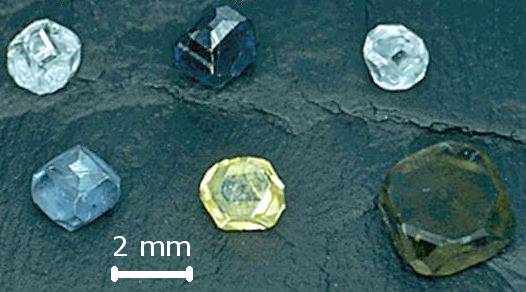
Nevertheless, as exciting as this process is, these synthetic gemstones are not considered “real” minerals. Minerals are only formed naturally by geologic processes or are naturally precipitated by organisms. Be sure that if you consider purchasing a laboratory-made gemstone that you know that most scientists (and gemologists) do not think of them as real minerals!
***See 3.10 for Text and Media Attributions
a solid, inorganic, and crystalline substance that has a predictable chemical composition and form by natural processes.
A substance with its atoms arranged in a solid, repetitive structure.
The study, characterization, and identification of minerals.
Anything in the Universe that takes up space and has a mass.
The smallest unit of matter that can still form a chemical element.
A solid in which the atoms are arranged into a regular, repeating pattern.
An instrument that can determine the spacing of atoms in a crystal structure using X-ray radiation in order to identify a particular mineral.
a compound composed of silicon and oxygen in the formula SiO2.
A pure substance that is not composed of any other ingredients found in the Periodic Table of Elements. One atom can be composed of only one element and form bonds with other elements.
A table that displays all known chemical elements in order of atomic number, chemical property, and electron configuration.
A substance composed of two or more atoms. A compound is made of different elements.
Two or more atoms that are connected by a bond. These atoms can be the same element or different elements.
a metallic, brassy-yellow mineral made only of the element gold (Au). It is a precious metal in the world economy.
An extremely hard mineral composed only of carbon (C). It is a precious mineral that can take on a glassy to brilliant luster and it is sometimes a conflict resource.
NaCl
A salty, halide mineral that is often colorless or white. Halite is commonly known as rock salt and used globally as a condiment. It tends to form as cubic-shaped grains or crystals.
A very common rock-forming silicate mineral with formula SiO2.
A chemical molecule or compound that contains carbon and hydrogen bonds in its structure that is often used as nutrients or tissues for living organisms.
A complex molecule that is a building block in all known life that carries out essential tasks in metabolism.
A common type of organic molecule found in all known life that is usually used to store energy.
An organic sedimentary rock formed by the compaction of plant and animal organic matter over millions of years.
rocks that cement together from weathering products, either from sediments or chemical ions in water.
CaCO3
A carbonate mineral that strongly reacts with dilute acid. Calcite composes the sedimentary rock limestone and composes the skeletons of some ocean life.
A round, oceanic microorganism with a calcium carbonate exoskeleton consisting of multiple plates. Sometimes also called a coccolith.
A shelled water-dwelling organism from the lophotrochozoan group of animals. Although they appear like clams, there is asymmetry between the top and bottom shells.
An ancient, sea-dwelling creature from the arthropod family with a body separated into three lobes. Trilobites went extinct about 252 million years ago during the Permian Mass Extinction.

